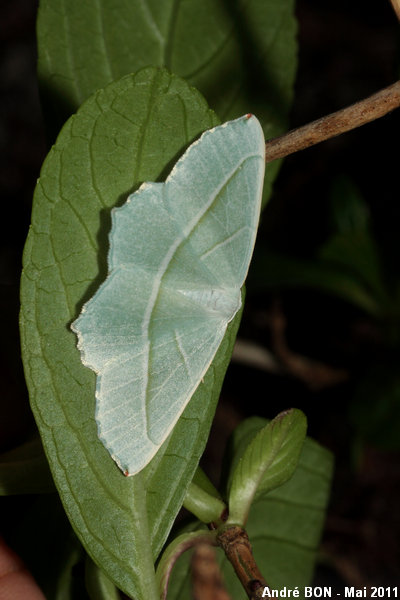
| Light Emerald (Campaea margaritata (Linnaeus, 1767)) |

|
|
Scientific name: Campaea margaritata (Linnaeus, 1767) Common name: Light Emerald Other names: Old scientific name: Campaea margaritaria. French name: Céladon, Phalène perlée Order: Lepidoptera Suborder: Heterocera Family: Geometridae Subfamily: Ennominae Wingspan: 42-54 mm. Females are generally slightly larger than males. Moths of the second brood are smaller than those of the first one. Biotope: Open woodlands, waste lands, hedgerows, parks and gardens. Geographic area: Europe, Near East, North Africa. Flight time: May-June, then August-September. Number of generations : 2 (1 in altitude and in northern regions). Caterpillar: Greyish brown, reddish brown or olive green with a flattened underside and a fringe of hairs on the lateral sides. There is an additional pair of prolegs under the eighth segment. Host plant: Many deciduous trees and shrubs. |
The Light Emerald is an ivory or very pale green colour. Moths of the second brood are greener. The fore wings are crossed by two white lines bordered with olive green. They show a small red spot at the tip. The hind wings only show one similar line. It seems to form a continuous line with the second line of the fore wings (starting from the base), when the wings are open. The hind wing margin is angulous. The Light Emerald over winters as a caterpillar. |
| [To know more about the Light Emerald] [Top] |

|
This Light Emerald was poorly hidden under an Hydrangea leaf for its diurnal rest. My attention has been attracted by the tip of the wing which was visible at the leaf edge. I have been able to shoot a complete series of pictures by turning the leaf upside down and without apparently disturbing this beautiful moth. |